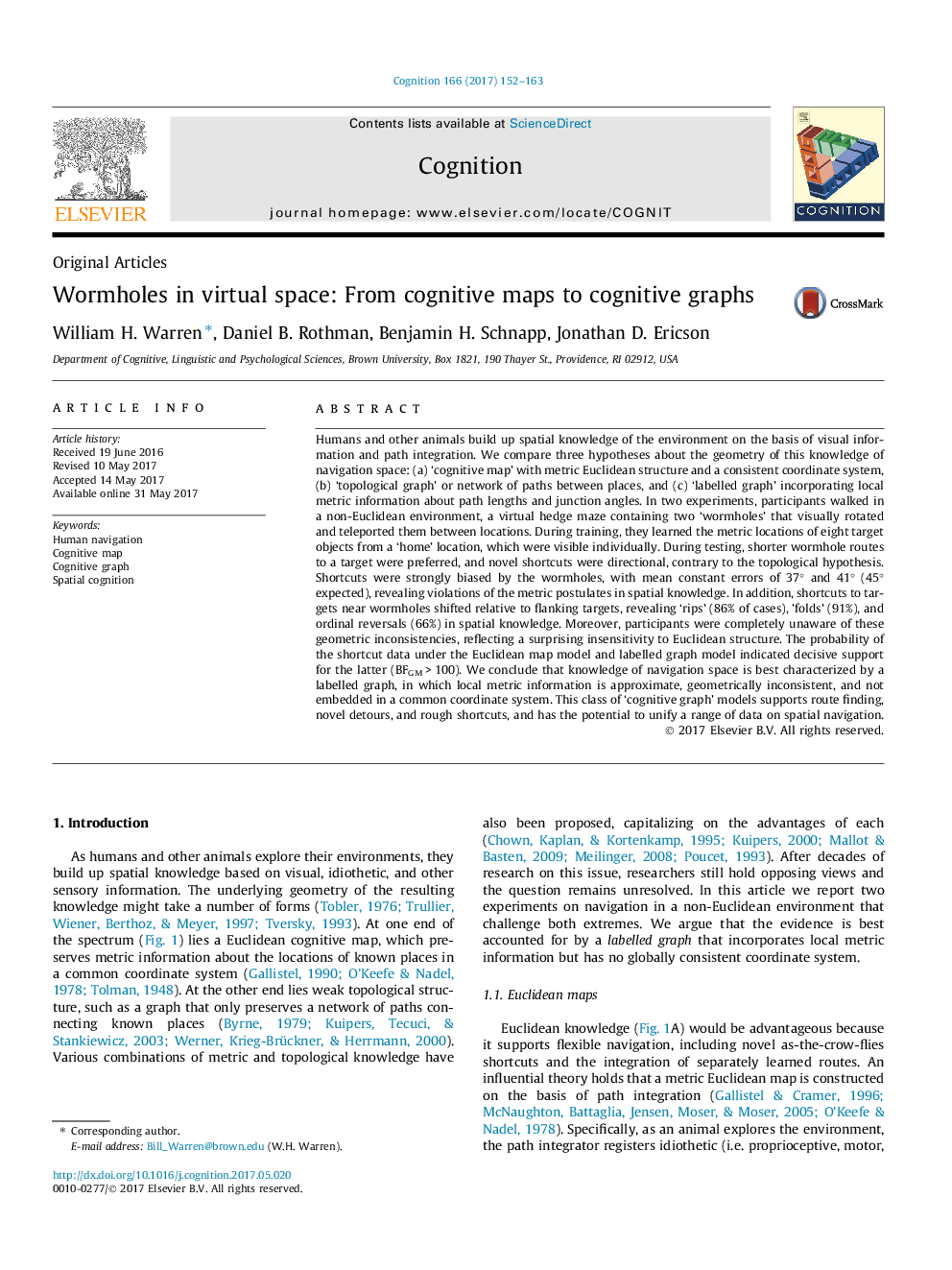| Article ID | Journal | Published Year | Pages | File Type |
|---|---|---|---|---|
| 5041550 | Cognition | 2017 | 12 Pages |
•Cognitive maps are thought to have a metric Euclidean geometry.•Participants learned a non-Euclidean virtual environment with two ‘wormholes’.•Shortcuts reveal that spatial knowledge violates metric geometry.•Participants were completely unaware of the wormholes and geometric inconsistencies.•Results contradict a metric Euclidean map, but support a labelled ‘cognitive graph’.
Humans and other animals build up spatial knowledge of the environment on the basis of visual information and path integration. We compare three hypotheses about the geometry of this knowledge of navigation space: (a) ‘cognitive map’ with metric Euclidean structure and a consistent coordinate system, (b) ‘topological graph’ or network of paths between places, and (c) ‘labelled graph’ incorporating local metric information about path lengths and junction angles. In two experiments, participants walked in a non-Euclidean environment, a virtual hedge maze containing two ‘wormholes’ that visually rotated and teleported them between locations. During training, they learned the metric locations of eight target objects from a ‘home’ location, which were visible individually. During testing, shorter wormhole routes to a target were preferred, and novel shortcuts were directional, contrary to the topological hypothesis. Shortcuts were strongly biased by the wormholes, with mean constant errors of 37° and 41° (45° expected), revealing violations of the metric postulates in spatial knowledge. In addition, shortcuts to targets near wormholes shifted relative to flanking targets, revealing ‘rips’ (86% of cases), 'folds' (91%), and ordinal reversals (66%) in spatial knowledge. Moreover, participants were completely unaware of these geometric inconsistencies, reflecting a surprising insensitivity to Euclidean structure. The probability of the shortcut data under the Euclidean map model and labelled graph model indicated decisive support for the latter (BFGM > 100). We conclude that knowledge of navigation space is best characterized by a labelled graph, in which local metric information is approximate, geometrically inconsistent, and not embedded in a common coordinate system. This class of ‘cognitive graph’ models supports route finding, novel detours, and rough shortcuts, and has the potential to unify a range of data on spatial navigation.
